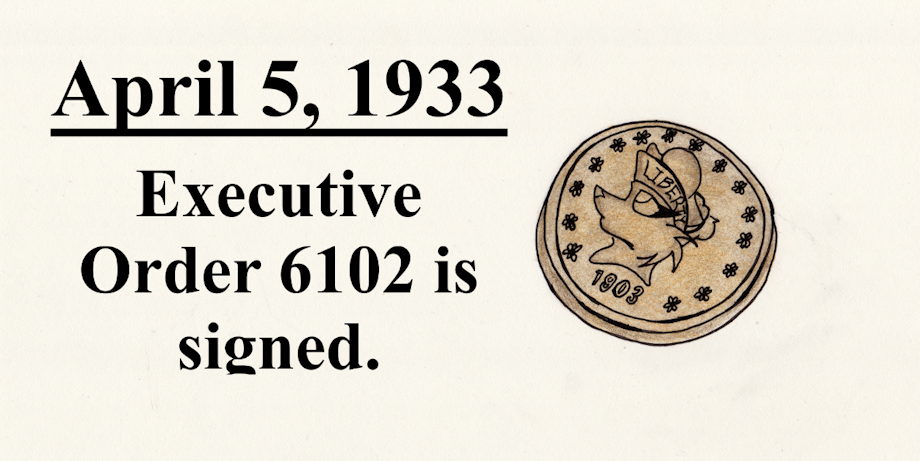On April 5, 1933, US President Franklin D. Roosevelt signs Executive Order 6102, "forbidding the Hoarding of gold coin, gold bullion, and gold certificates within the continental United States." The order required that all to surrender all gold coins, bullion, and certificates to the Federal Reserve by May 1, 1933, in exchange for $20.67 (~$400 in today's money) per troy ounce; however, exemptions were made for professional uses of gold (such as art, jewelry, dentistry, etc.), coins with numismatic (collector's) values, and up to $100 worth of gold coins. The rationale behind the order was that belief that hoarding of gold was hindering the recovery of the economy during the Great Depression and that the Federal Reserve could not increase the money supply, a part of Roosevelt's recovery plan, due to legal requirements to be able to back a certain percentage of the money supply with gold. Further executive orders as well as the Gold Reserve Act of 1934 would continue this policy as well as setting the value of gold at $35 per ounce. This price would remain in effect until 1971 when President Richard Nixon takes the US off the gold standard with US no longer exchange dollars for gold at a fixed rate. Private ownership of gold certificates was legalized in 1964 and the limits on gold ownership were finally lifted ten years later under President Gerald Ford.
Details
Published:
6 years, 2 months ago
06 Apr 2019 02:29 CEST
Initial: 2d474973854fc26c2264f044ec4691da
Full Size: 79034a80f022b16c5aa5eb5c4d975541
Large: cdc8b6ad5cdeea06692127c76b382099
Small: 09584df870b31dce7cd694b93f23c50e
Stats
58 views
8 favorites
2 comments
